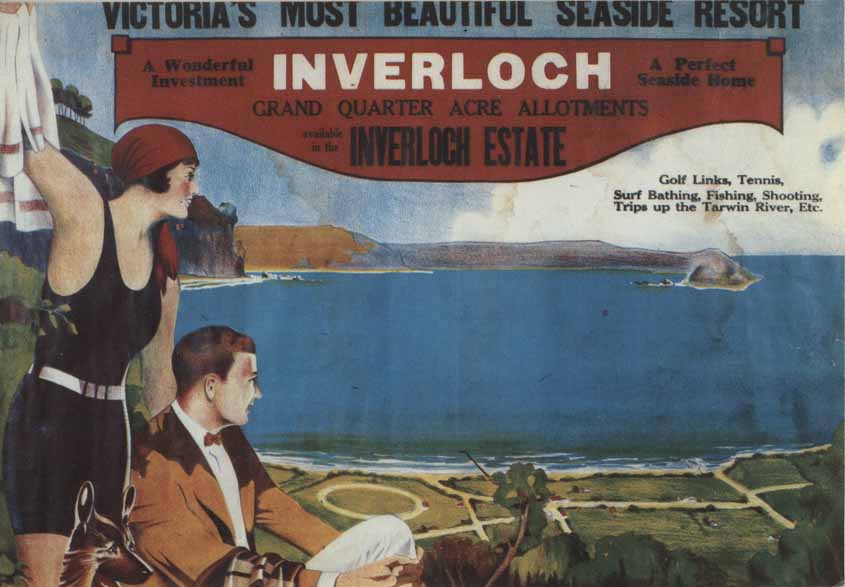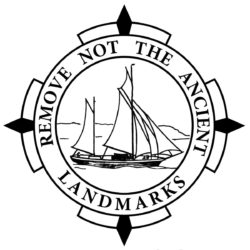Public Meetings
When: 3rd Monday of every 2nd month from 2:30 to 4:30pm
28th Apr, 16th June, 18th Aug, 20th Oct, 15th Dec 2025
Where: Meeting Room 1 at the Inverloch Community Hub, A’Beckett St, Inverloch
Pine Lodge
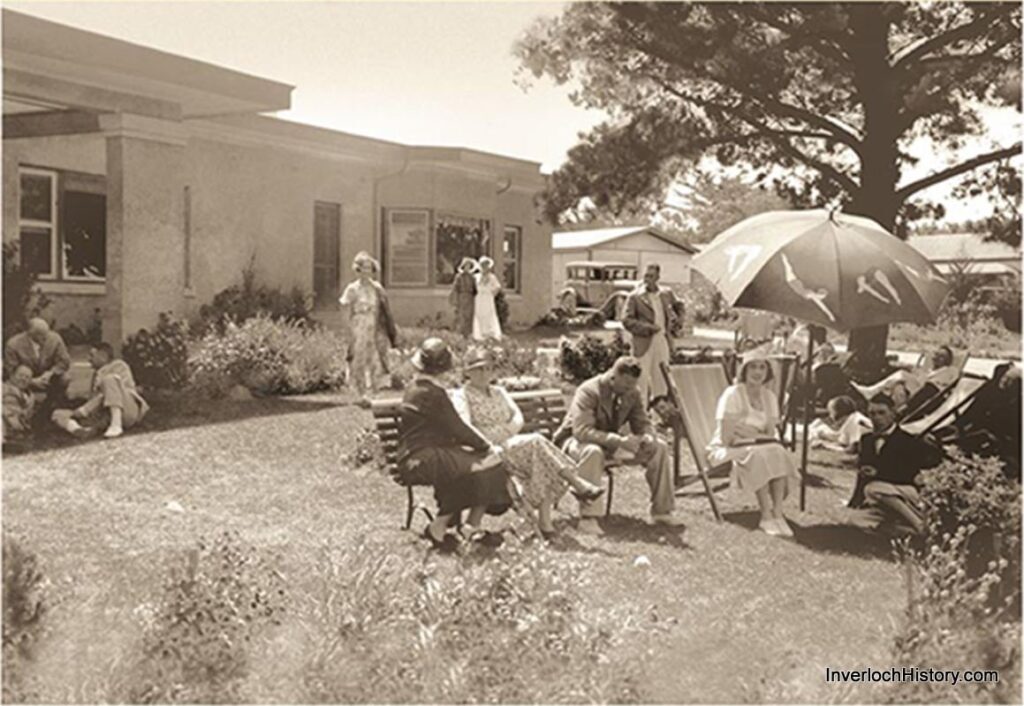
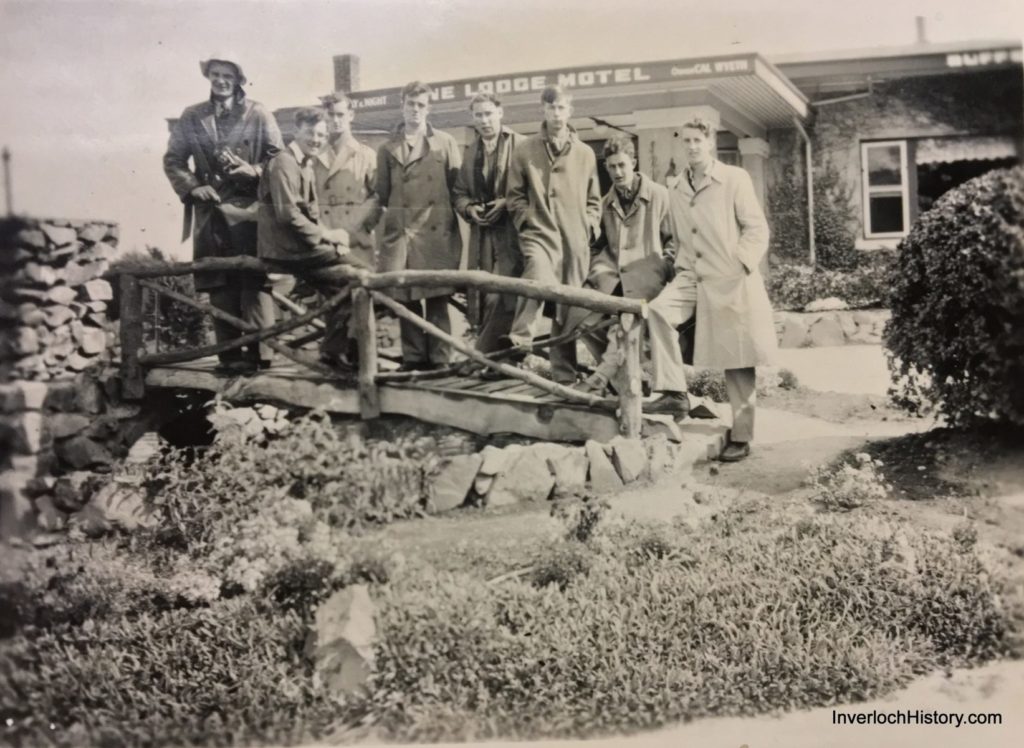
Sam Gatto (Sebastian J. Gatto) – Local historian & author
Born in Italy in 1942, Sam migrated to Australia with his family when he was 9 years old. He grew up in Wonthaggi and studied at Melbourne University. After teaching in Victoria for 4 years, Sam continued his teaching career in the Italian part of Switzerland.
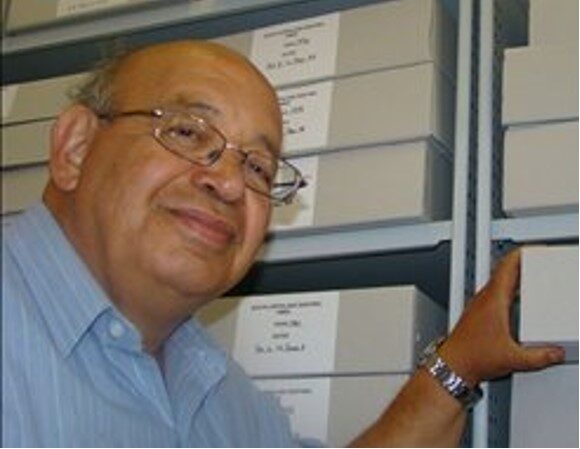
Since returning to Australia in 2000, Sam has dedicated himself to researching his hometown’s rich history. A past president and active member of the Wonthaggi & District Historical Society, Sam has given many talks to organisations and written essays on subjects relating to Wonthaggi’s history.
Sam is the author of four books:
- Accepting the Challenge, A History of the Wonthaggi and District Hospital (1970)
- Not Just for Workmen, A History of the Wonthaggi Workmen’s Club
- Contribution and Conflict, A History of Wonthaggi and WWI (2016)
- A Sort of History of Me, My Family and a Cow Named Gina (2022).
In his writing, Sam is interested in the role that the men & women of his town played in creating a better society.
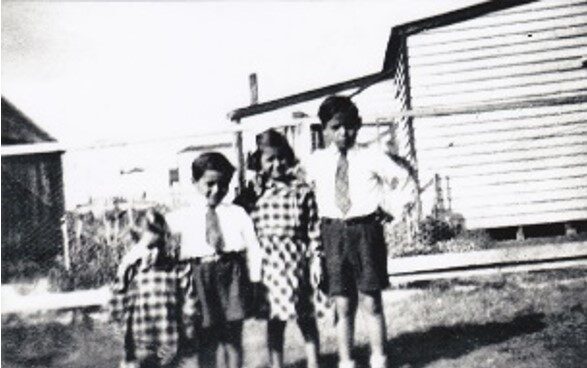
Sam’s latest book is partly based on historical documents, personal memories and family stories. It tells of the migration journeys of Sam’s family, beginning with his grandparents.
At the heart of the book is the story of Sam and Wonthaggi, as seen through the eyes of a growing boy during the 1950s and 1960s, a time of fundamental change in Australian society. Above all, the book tells of the struggles and successes of a migrant family settling into Australian society, reflecting so many other migrant stories.
Do you enjoy seeing our history?
Opportunities exist to be involved in valuable projects. Research, preserve & share Inverloch’s history.
Individuals joining together & working as a team will ensure that our rich history is kept alive & accessible.
We are especially seeking people with digital skills to support archiving & presentation of our collection.
We are in a healthy financial state & have an extensive collection just waiting to be explored further.
For further information, please contact our Secretary via email secretary@inverlochhistory.com
Inverloch History montage at the Bendigo Bank
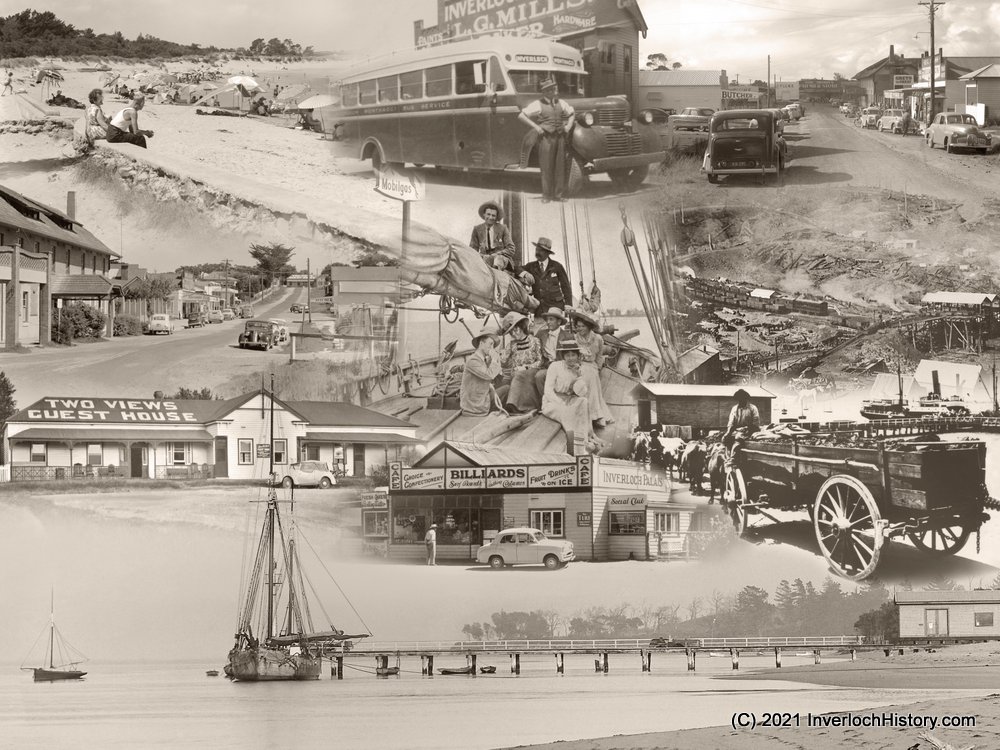
This Inverloch History montage of historical images was recently installed at the Bendigo Bank in Williams St, Inverloch.
Book – “At Screw Creek”
We congratulate Linda Cuttriss on wining the 2020 Bass Coast Prize for Non-fiction with her story “At Screw Creek”, described as “Part True Detective Story, Part Local History, Part Family History”. We hope to share this with you soon; or, you can read it online at the Bass Coast Post website at BassCoastPost.com/bass-coast-prize/at-screw-creek.
Green Storage Shed
With a lot of help from Inverloch Removals, we’ve cleared the last off-site repository of collection items. Almost everything is now under one roof – just a few bits and pieces are off-site as they are being worked on. We thank Terry Hall for generously caring for these objects for what Terry thinks could be ten years.
The Green Shed is FULL, now that we have everything in the collection at that location. The material relocated during November has now been been sorted & registered
Amazon 1863 Project
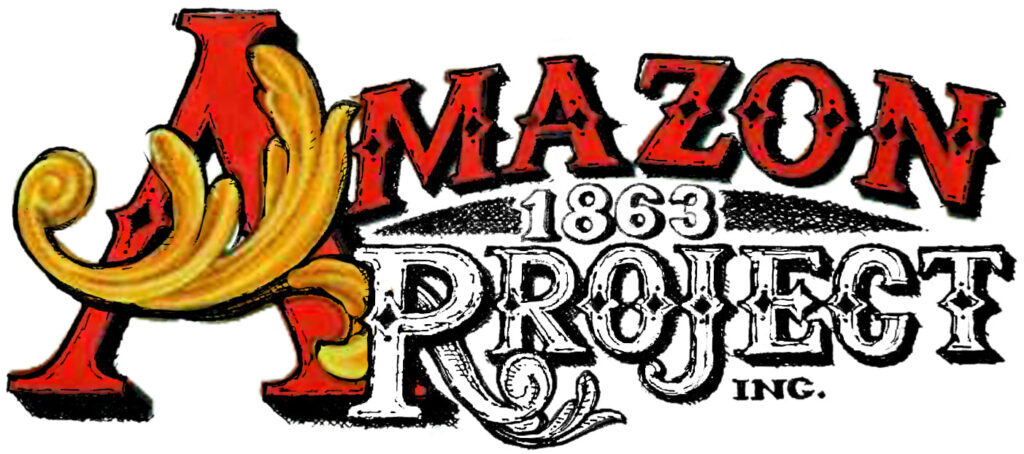
Amazon Shipwreck: The team at the Amazon 1863 Project have achieved so much in such a short time. Their mission is the preservation of significant Amazon artefacts, the site & written records. Educate & share the history of this amazing ship. They have a very active group on Facebook & just launched their website.
Website: Amazon1863.org.au
Facebook: Facebook.com/groups/amazon1863project
Drive-in Cinema at Inverloch?

Apparently there was an Inverloch Drive-In which opened in the 1960’s.
The drive-in was demolished & is now factories and light industry. It was possibly in Cashin Street with operation dates of 1/9/1968 to 1/1/1975 with a capacity of 182.
We are interested in any further information & photos, including exact location & personal memories. (Image shown is only a generic drive-in example)
Thanks for any information.
Shack Bay
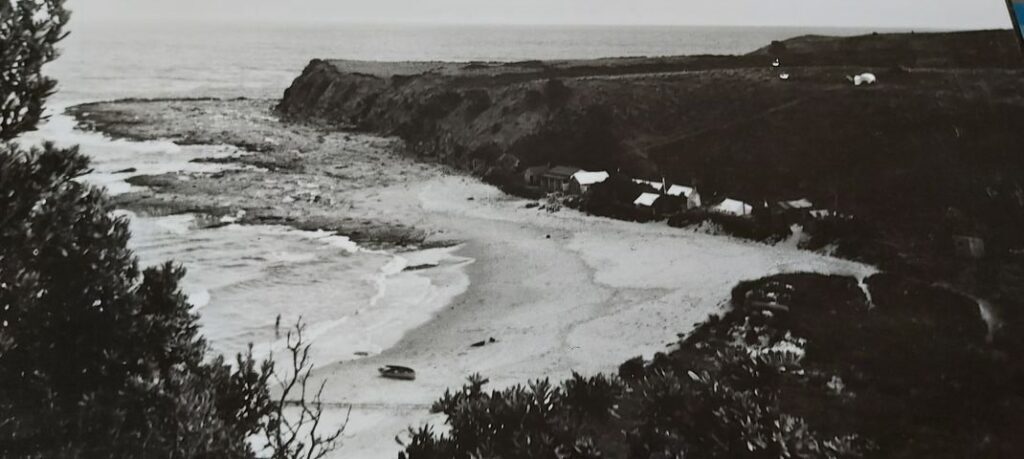
Shack Bay (on the Bunurong Coast between Inverloch & Cape Paterson west of Eagles Nest) – Ever wondered why it has that name? Look closely at these photos taken around 1940-50s. In 1934, during the 5 month long Wonthaggi Coal Strike, the miners had plenty of time on their hands & this was the result. Clearly no building regulation roadblocks during this period. They were removed in 1977. (Photo credit to Jenny Graham whose uncle took them whilst on a fishing trip.)
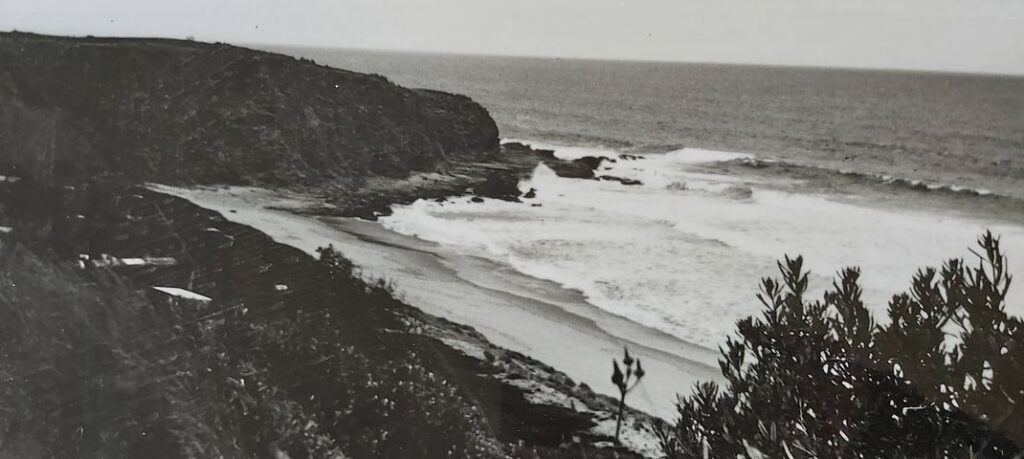
‘The Kiosk’ (Brown’s Kiosk) – Can you help?
We are looking for more photos of ‘The Kiosk’ (Brown’s Kiosk) & the attached house, which was on the corner of Abbott St & Ramsey Blvd.

We have this relatively recent image from when it was for sale in 2010, prior to it being demolished.
Do you have any others? If so, we’d love to hear from you & perhaps borrow & scan them.
Eulalie Brewster OAM
We congratulate our valued & much loved Patron & Life Member Eulalie Brewster on being awarded the Medal of the Order of Australia (OAM) in the 2020 Australia Day Honours.
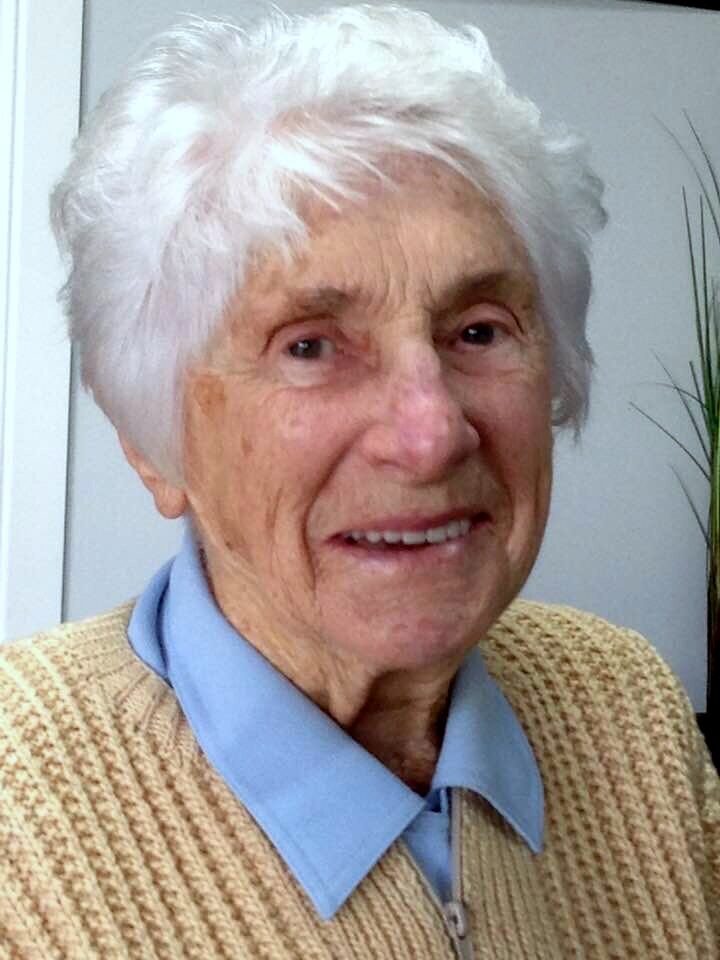
Eulalie was honoured by the nation for service to the community of Inverloch in the fields of history, conservation, the environment, and for other community endeavours. Eulalie was a founder of Inverloch Historical Society and an active local historian for decades.
We are grateful for her immense contribution to our Society.
Historic Images
‘Southern Bazaar‘ of 13 A’Beckett Street, Inverloch have been helping us promote Inverloch’s past by selling a selection of our restored images as Prints.
We sincerely thank them for their ongoing support.

On the hunt for images
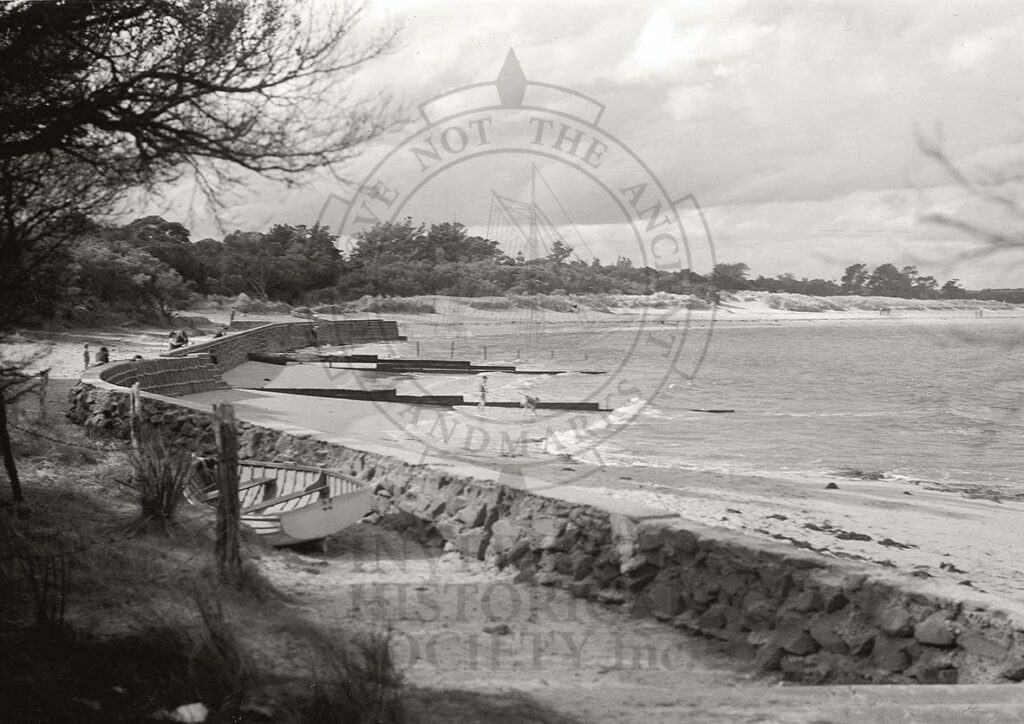
The print above is an image of the Inverloch stone seawall built back in 1934 with sustenance labour, commenced below St. Kilda Street and is part blue stone & part sandstone.
The wooden groynes were added to try and stop sand movement.
The photo was taken near Venus Street. Large trees in the top right of the picture on the far shoreline mark Beilby’s farm.
We are always looking for both new images & documents. Also new members to help us.
What’s with those gate posts?
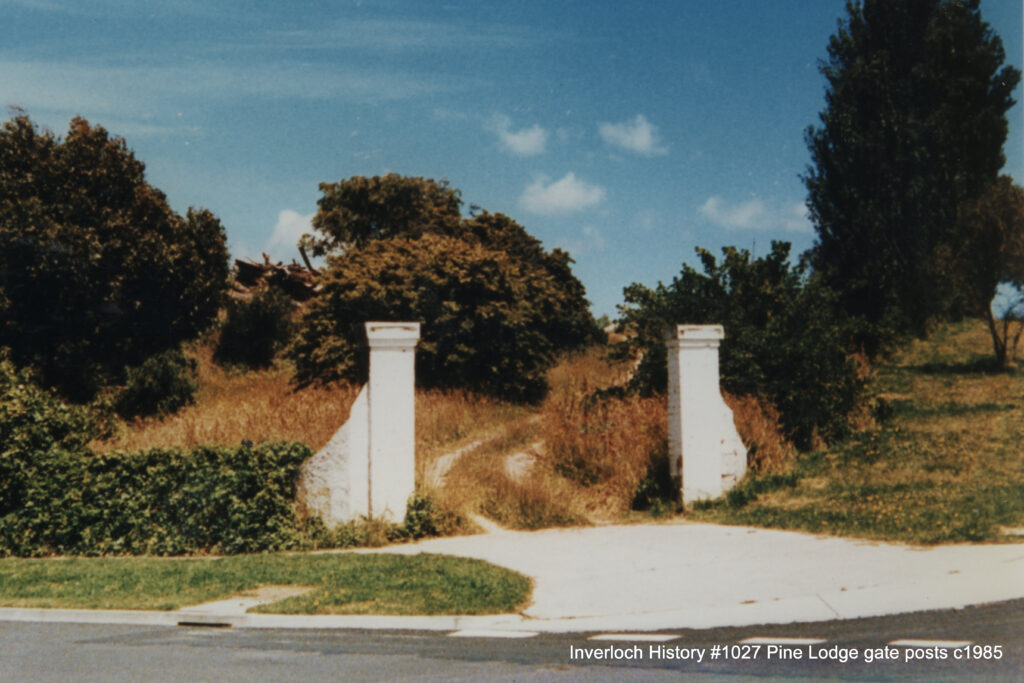
Sitting on seven acres at the comer of Ramsey Parade and Scarborough Street, Pine Lodge was built in 1930 and demolished in 1985. Almost everything about Pine Lodge was notable. If it still existed, it would be the prime historic building in Inverloch, yet its fame goes far beyond Bass Coast & Gippsland. The story of its origin, its structure, its architecture, the people who stayed there and the man who ran it, built it and during the Great Depression saw a vision for it, is the story of legendary quality, worthy of any notable Victorian inclusion.
More on the history of Pine Lodge…
Amazon Shipwreck at Inverloch in 1863
Site investigation undertaken at Inverloch Surf Beach during Nov — Dec 2018 by Heritage Victoria.
Dr Maddy McAllister has completed her report on this heritage project and provided the following copy to the Society.
Click here for more information…
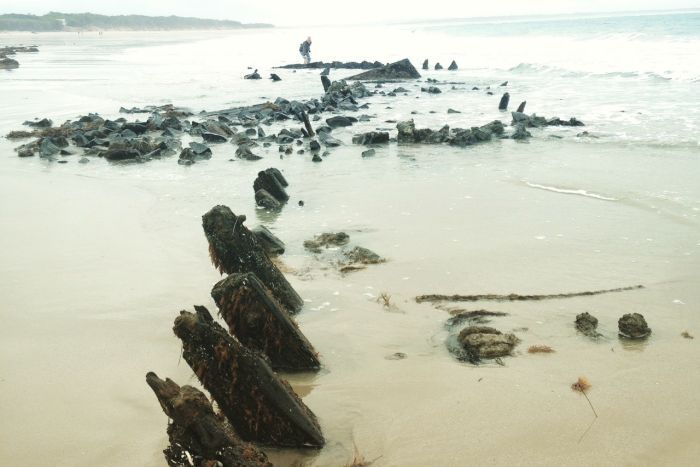
(Source: Heritage Victoria)
